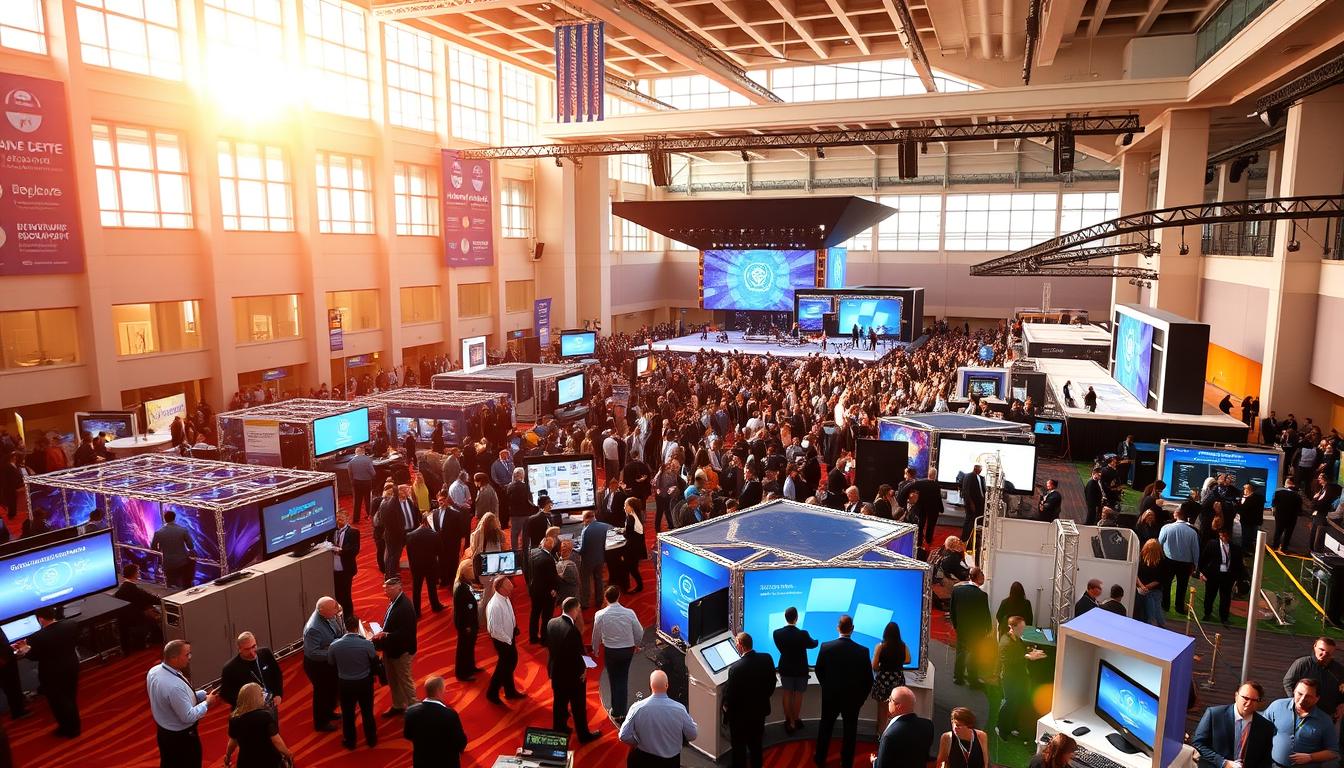Now Reading: NFT Metaverse Economy: A New Financial Frontier
- 01
NFT Metaverse Economy: A New Financial Frontier
NFT Metaverse Economy: A New Financial Frontier
The digital world is evolving faster than ever, reshaping how we own, trade, and interact with value. At the heart of this transformation lies a powerful combination: blockchain-powered virtual spaces and unique digital assets. These innovations are creating decentralized ecosystems where users control their property, creativity, and transactions like never before.

Imagine owning a piece of virtual land or rare in-game gear that’s truly yours—not just leased from a corporation. This vision is becoming reality through cryptographic verification, which turns digital items into provably scarce commodities. Platforms now enable creators to monetize their work directly, bypassing traditional gatekeepers while ensuring authenticity.
What makes this shift groundbreaking? For the first time, users can prove ownership of digital goods across multiple platforms. A painting displayed in one virtual gallery could hang in another, retaining its value and history. This interoperability challenges conventional ideas about asset ownership, creating opportunities for global collaboration and trade.
Major brands and independent creators alike are recognizing the potential. From fashion houses launching virtual wearables to musicians selling exclusive concert experiences, the lines between physical and digital value continue to blur. This emerging system doesn’t just mimic real-world economics—it redefines them through transparency and user empowerment.
Key Takeaways
- Decentralized ownership models replace traditional corporate control
- Blockchain verification ensures authenticity for digital items
- Smart contracts enable direct peer-to-peer transactions
- Virtual real estate and collectibles gain real-world value
- New creator monetization opportunities bypass middlemen
Understanding the NFT metaverse economy: Foundations and Future
The fusion of unique tokens and decentralized systems is reshaping how we interact with virtual spaces. Blockchain acts as a trust layer, turning limitless digital files into scarce, tradable items through cryptographic proof. This technology lets users claim true ownership of anything from concert tickets to virtual gallery pieces.

Traditional markets rely on central authorities to validate transactions. Decentralized systems flip this model using smart contracts that execute automatically when conditions meet. These self-operating agreements cut out middlemen while ensuring creators get paid fairly for their work.
Value in these ecosystems grows through verifiable scarcity and practical utility. A digital painting gains worth not just from aesthetics but from its provable uniqueness and cross-platform display capabilities. Virtual land prices surge when locations attract foot traffic, mirroring real-world real estate dynamics.
Current trends show businesses building storefronts in popular virtual worlds. Musicians host album launches in digital venues, while brands create limited-edition wearables. As adoption grows, these systems could redefine global commerce through transparent, user-driven markets.
The Evolution of NFTs and the Metaverse
The journey of unique digital assets began with groundbreaking experiments that challenged traditional ownership concepts. Early pioneers laid the foundation for today’s thriving ecosystems through trial, error, and unexpected breakthroughs.

Milestones in NFT Development
2017 marked a turning point when two projects changed digital ownership forever. CryptoPunks introduced 10,000 algorithmically generated characters, while CryptoKitties let users breed virtual cats. Both caused Ethereum’s network to slow dramatically—proof of massive public interest.
These experiments revealed three critical insights:
- Blockchain could verify scarcity for digital items
- Ownership rights could travel across platforms
- Communities would pay premium prices for rare assets
The $69 million Christie’s auction of Beeple’s “Everydays” collection in 2021 shattered perceptions. Traditional art institutions suddenly recognized crypto-art as legitimate, accelerating mainstream adoption.
The Rise of Virtual Worlds
Early gaming platforms like Roblox showed the potential of persistent online spaces. Players built homes, hosted events, and traded virtual goods long before blockchain integration. Fortnite’s concert events proved digital worlds could rival physical venues for cultural impact.
Modern iterations now blend these concepts with decentralized technology. Users can:
- Purchase land parcels using crypto wallets
- Display collectibles in 3D galleries
- Monetize creative projects through smart contracts
This evolution mirrors real-world urbanization patterns. Prime locations in popular worlds now command prices comparable to physical real estate, creating new opportunities for investors and creators alike.
Blockchain Technology and Smart Contracts: Driving Decentralization
Decentralized networks operate through a combination of cryptographic verification and automated agreements. These systems eliminate reliance on central authorities by creating transparent records that anyone can audit. At their core, blockchain protocols timestamp transactions and bundle them into unchangeable data blocks.
How Smart Contracts Secure Transactions
Self-executing code replaces paperwork and third-party mediators. When selling virtual land, for example, smart contracts:
- Verify payment receipt through wallet addresses
- Transfer ownership tokens instantly
- Update ledgers across all network nodes
This automation reduces human error and ensures all parties fulfill obligations before completion.
Blockchain’s Role in Digital Ownership
Cryptographic hashes turn digital files into unique assets with traceable histories. Each token acts as a certificate of authenticity, stored across thousands of computers. Key benefits include:
- Fraud prevention through consensus verification
- Transparent tracking of asset origins
- Cross-platform recognition of rights
This framework lets creators monetize work directly while buyers gain provable ownership. Decentralized ledgers build trust by making every transaction visible yet tamper-proof.
Virtual Real Estate and the Digital Asset Landscape
Property markets are expanding beyond physical borders into immersive online spaces. Digital parcels now trade for millions, blending investment strategies from traditional markets with web3 innovation. Platforms like Decentraland and Somnium Space let users buy, develop, and monetize virtual land using blockchain-based ownership records.

Location drives value in these environments just like in cities. Plots near virtual concert venues or popular shops often cost 10x more than remote areas. Developers create interactive experiences on their land—from art galleries to VR casinos—earning income through ticket sales or partnerships.
Celebrities are staking claims in this new frontier. Singer Daler Mehndi built Balle Balle Land on PartyNite, planning to sell merchandise through his virtual store. Tech pioneer Michael Arrington made history by selling his Kyiv apartment as a tokenized asset via Propy, merging physical and digital property markets.
Three key factors shape virtual land value:
- Foot traffic patterns in the platform
- Development restrictions set by creators
- Platform adoption rates over time
This market’s growth mirrors early internet domain booms but with added utility. Owners can host events, display collections, or lease space—turning pixels into profit centers. As more businesses establish virtual presences, these digital assets could become essential components of global commerce.
Innovative Use Cases in the Metaverse
Creative industries are discovering groundbreaking ways to leverage blockchain technology in virtual spaces. From galleries to gaming arenas, these applications redefine ownership and engagement through transparent systems.
Digital Art, Music, and Collectibles
Platforms like Rarible empower artists to sell directly to collectors, cutting out traditional gatekeepers. Musicians now release limited-edition tracks with bonus content for token holders. Collectors value these items not just for aesthetics, but for their provable scarcity and resale potential.
Gaming and Immersive Experiences
Games like Axie Infinity let players earn real income by breeding unique creatures. Virtual concerts in platforms such as decentralized worlds blend live performances with interactive elements. Event tickets double as collectible assets, gaining value long after the show ends.
Three key trends shape these innovations:
- Direct creator-to-consumer sales models
- Cross-platform asset portability
- Hybrid physical-digital experiences
Interoperability and Enhanced Virtual Identity
Imagine a world where your virtual wardrobe works everywhere—from gaming arenas to social hubs. Current platforms lock purchases behind invisible walls, forcing users to rebuild identities in each new space. Interoperability cracks these barriers open, letting digital items flow between environments like physical goods move through cities.
Today’s systems create isolated ecosystems. A Roblox hat stays trapped in its universe, while Call of Duty skins can’t visit Fortnite. This fragmentation reduces item value and frustrates users seeking consistent self-expression. Blockchain solutions offer portable ownership through universal wallets that store verified assets.
Picture buying sneakers in Nike’s metaverse store. These NFT-based items could then appear on your avatar in Disney’s theme parks or Microsoft’s collaborative spaces. Your digital identity remains intact across experiences—no rebuying accessories for each platform.
Developers face three key challenges:
- Creating shared technical standards for asset formats
- Designing fair revenue splits between platforms
- Preventing counterfeits in open virtual reality systems
Early adopters like Gucci and Warner Music test cross-platform wearables, proving demand for unified identities. As protocols mature, users may control their virtual selves as completely as physical ones—owning what they buy, wearing it anywhere, and building reputations that span entire digital realms.
Enterprise Adoption: Corporate Innovation in the Metaverse
Forward-thinking companies are rewriting the rules of commerce through immersive digital environments. Major brands now host product launches in persistent 3D spaces, while retailers experiment with virtual storefronts that blend physical and digital shopping experiences.
Transformative Business Models
Smart contracts enable automated partnerships between corporations and creators. Fashion brands collaborate with digital artists to release limited-edition wearables, with royalties split instantly through blockchain protocols.
Virtual real estate development has become a strategic focus. Companies like Samsung and HSBC purchase prime land parcels to build interactive showrooms. These spaces host virtual events attracting global audiences, creating new revenue streams.
Recent data shows profitable opportunities in immersive platforms drive corporate investment. From virtual trade shows to AI-powered customer service avatars, businesses leverage decentralized tools to engage tech-savvy consumers.
This shift signals a broader transformation. Traditional industries adopt web3 strategies to stay competitive, blending physical infrastructure with digital innovation.
FAQ
How do smart contracts ensure trust in virtual transactions?
Smart contracts automate agreements using blockchain technology, eliminating intermediaries. They execute terms only when predefined conditions are met, ensuring transparency and reducing fraud risks. Platforms like Ethereum enable creators and buyers to trade digital art or real estate securely.
What role does cryptocurrency play in virtual worlds?
Cryptocurrencies like Bitcoin or Ethereum act as primary payment methods for purchasing digital assets, such as collectibles or virtual land. They enable cross-border transactions, fractional ownership, and seamless integration with decentralized platforms like Decentraland or The Sandbox.
Can users monetize creativity in immersive environments?
Yes. Artists and musicians sell tokenized works on platforms like OpenSea or Rarible, while game developers design tradable in-game items. Virtual concerts hosted on platforms such as Roblox also let creators earn through ticket sales or exclusive content access.
How is virtual real estate changing traditional investment models?
Platforms like Somnium Space allow users to buy, develop, and lease parcels of land using blockchain-based deeds. These assets appreciate based on location and demand, mirroring physical markets but with global accessibility and programmable utility.
Why is interoperability critical for digital identity systems?
Interoperability lets users maintain a consistent avatar, inventory, and reputation across multiple platforms. Projects like Polygon’s Unified Identity Protocol enable seamless transitions between gaming, social, and trading environments without losing ownership rights.
Are corporations leveraging token-based ecosystems?
Brands like Nike and Gucci use tokens to offer limited-edition wearables or access to virtual events. These models foster loyalty programs, decentralized governance, and new revenue streams through partnerships with platforms like Fortnite or Sandbox.
What safeguards exist for digital ownership disputes?
Blockchain’s immutable ledger provides verifiable proof of ownership. Projects like IPFS store decentralized records, while platforms such as SuperRare include embedded royalty clauses in smart contracts to protect creators’ rights.














